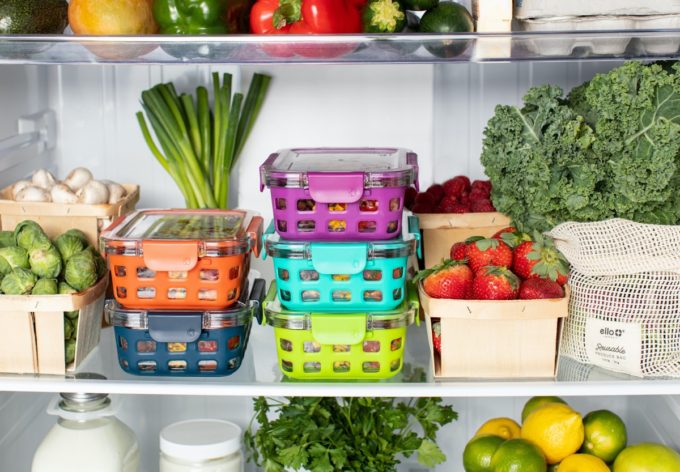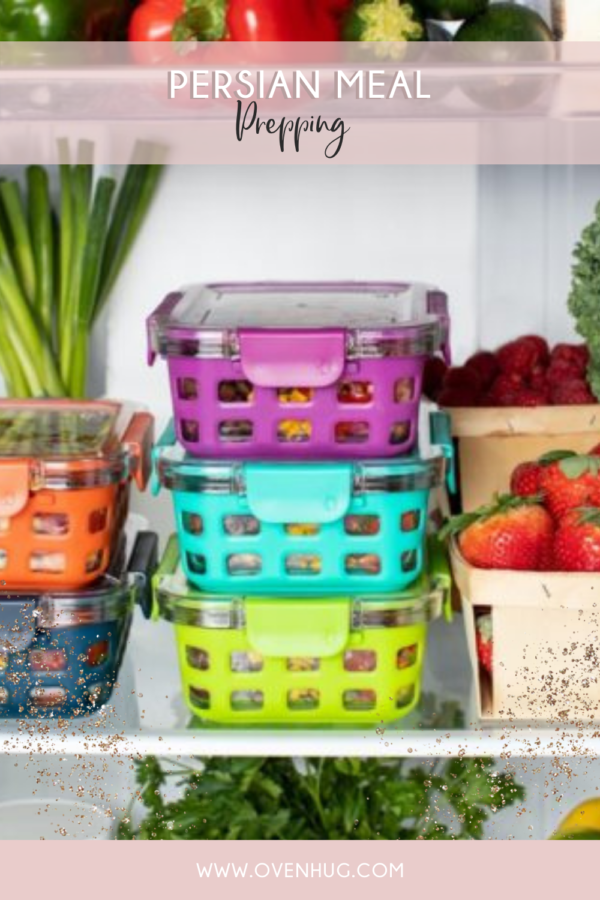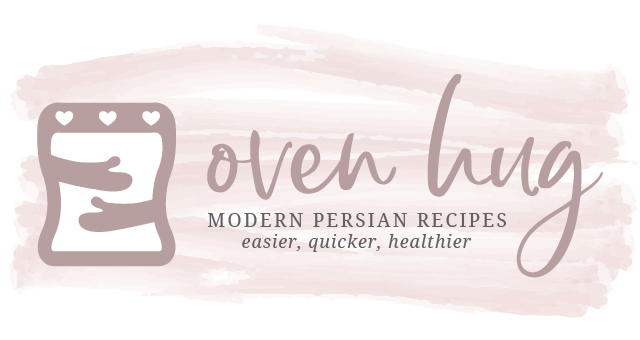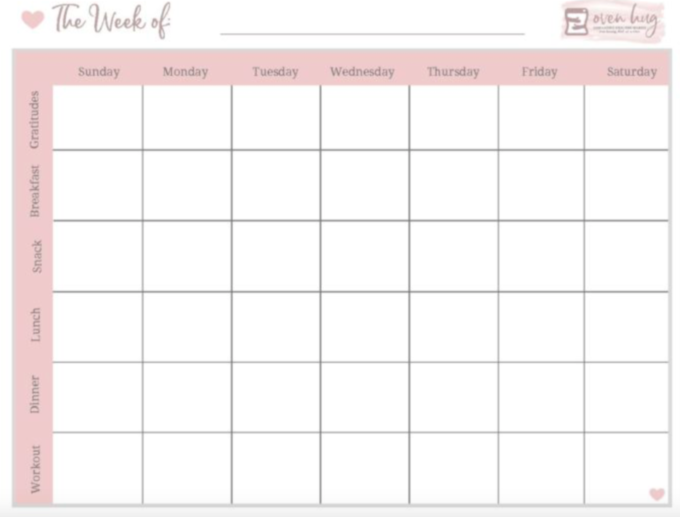
Cooking Persian meals for Persian meal planning, as with any type of cooking, requires prepping and planning especially when it comes to a busy weekday night. One of my biggest motivators for creating content and recipes around Persian cuisine is the hope that you will become empowered and able to incorporate Persian dishes into a typical week – much in the same way many families enjoy Taco Tuesdays. Persian food is far too delicious to reserve for special occasions or restaurants only. With our tips and tricks, I sincerely hope you will find that cooking Persian dishes can be fast and easy!
For Persian meal planning purposes, the week starts on Monday and runs through Sunday. On a good week, I meal plan, shop, and begin prepping foods on Sundays. By midweek we’re ready to enjoy some leftovers. Realistically I cook about 3 times per week and reuse and repurpose ingredients in subsequent meals. Towards Thursday or Friday, we need fast and easy options, allowing ourselves to resort to take-out and restaurant dining.
Here I’ll share tips and tricks for weekly meal planning and prepping Persian food style – tweak these tips to make them work for you!
By mindfully strategizing routines and weekly practices, you will be making homemade, Persian regional specialties on the regular.
Shop and Stock the Pantry
The first step to Persian meal planning is stocking the pantry and the refrigerator so you have the foods and ingredients readily available. It’s important to have the spices, unique ingredients before diving into cooking.
Refer to our handy guide, How to Stock a Persian Pantry. Included are handy links for ordering specialty items online. Take a look and then draft a list for grocery shopping and online ordering.
Now, imagine a healthy, well-balanced, plate. The elements to build a nutritious plate can easily be applied to any region of food, especially to Persian dishes.
Persian Meal Planning – Elements to a healthy, well-balanced plate:
- healthy grain
- lean protein
- vegetables
- fruit
Each time a meal is put together, ideally, it will have a good mix of healthy grains, lean proteins, vegetables, and fruit.
Let’s start with breakfast. Our family’s daily go-to breakfast is oatmeal (grain) served with fresh fruit and nuts (protein). An example of a well-balanced, traditional Persian breakfast is haleem. Haleem starts with a base of wheat (grain), turkey meat (lean protein), and I would suggest a side of fresh fruit to balance it out.
In our home, lunch is not always a Persian meal. It is often either warmed-up leftovers from the tasty dinner the night before, or a colorful grain bowl or salad bowl. A good example of a well-balanced lunch bowl is a buddha bowl or a burrito bowl. Start with a grain like rice or beans, top with meat or tofu, and fresh greens, roasted veggies, or fresh herbs. I love adding toasted, slivered, or sliced almonds to lunch bowls for crunch and added protein.
Persian mixed rice dishes make for delicious leftovers the next day. Two of my favorite mixed rice recipes are Loobia Polo | Persian Green Bean Rice and Adas Polo | Lentil Rice. Both are perfect as a base for those healthy lunch bowls described above.
Now that we have gone over the fundamentals of a well-balanced, healthy plate, let’s get specific and break down how to have all the ingredients and parts of a meal ready to go with Persian meal planning!
Grains
With Persian food, the grain is most often rice. We prefer freshly steamed rice to batch-cooked, leftover rice. The only prepping to do for rice is to be sure you have enough for the week ahead! Long-grain Basmati rice is typically sold in very large, heavy bags. There is enough for several weeks of cooking.
To be honest, these days we keep our portion sizes of rice on the smaller side. Rice has become more of a side dish than a central element. For easy access, store a large mason jar on the kitchen counter to save yourself from lifting the heavy rice bag each time you need it.
If you do find yourself with left over, extra rice, make this easy recipe for Tah-Cheen | Baked Chicken and Rice Casserole. Another great way to use up extra cooked rice is to roll it over into a stir-fry rice dish. Simply add frozen mixed vegetables, Asian sauces, and a couple of eggs for protein and you will have a complete, balanced meal.
Vegetables
Vegetables are important to shop for, clean, and prep. Keep fresh vegetables available for snacking to add to daily fresh salads.
In terms of cooking veggies, we love our air fryer. Using the air fryer to roast vegetables is fast and easy. Typically we’ll roast enough cauliflower, broccoli, carrots, and Brussel sprouts enough for a few days. They are great for the lunch bowls we’ve covered and as daily dinner side dishes. Potatoes and sweet potatoes are also wonderful to cook ahead either by boiling or roasting. They can be used in Salad Olivier | Persian Potato Salad or again as a simple side dish or addition to a hearty lunch bowl.
Persian food requires a lot of chopping. Look for pre-cut veggies in the supermarket to save time or chop veggies the day before and store them in an air-tight container until you are ready to use them.
The base of most Persian recipes is sauteed sliced or chopped onions. To save a little time, pre-chop and cook onions enough for the week. I like the smell of cooking onions and garlic and it only takes about 5 minutes to get this first step of a meal going so I often forgo this prepping step.
Fresh herbs such as those used in Sabzi Khordan is wonderful to have in large bunches, washed and stored between layers of paper towels in large plastic bags in the refrigerator. We are lucky to have abundant herbs in our garden so over here it’s as simple as stepping out and snipping a daily handful to enhance our meals and our dishes. Herbs are wonderful to balance a dish and help with digestion.
Protein
We eat meat most nights in our family, however, it’s easy to use tofu or beans in most Persian dishes to fill the protein requirements for a healthy, well-balanced dinner plate.
For meats, we often batch cook chicken and ground turkey. I use simple ingredients and spices that can work in many dishes if I’m batch cooking meat. For any meat, I always start with sauteing onions in olive oil. I typically also add minced garlic. From there I cook the meat.
For chicken, I usually add a light touch of turmeric and or saffron. I can then easily roll the batch cooked chicken into a Persian recipe such as Persian Chicken and Rice Casserole | Tahcheen (see also Tachin Bites | Persian Crispy Rice Cups) or Persian Green Bean Rice | Loobia Polo Morgh. With the ground turkey, again starting with onions and garlic, I then add light spices such as celery and sometimes a touch of cumin or cinnamon. I can then use the cooked ground turkey in Taco Tuesday or in a healthy loobia polo version as well.
Eggs are an excellent source of protein. I love using our Instant pot to make boiled eggs for the upcoming week (How to Make Boiled Eggs in an Instant Pot). They are great to have for a quick avocado toast lunch topped with sliced egg and some yummy spices. They also are handy to have pre-cooked to make egg salad (Lemony Egg Salad) or Persian Potato Salad | Salad Olivier.
Fruit
Fruit plays a big role in Persian food culture and in our cultural hospitality. Fruit is washed, cut, passed around, and served both before meals and after. It is often considered the dessert. Fruit is an excellent, healthy choice to satisfy a sweet craving while deferring from refined white sugar. Here is my personal strategy for thinking about and planning for having abundant fruit in our menus.
Breakfast fruits – a variety of berries, citrus fruits, and bunches of bananas
Lunch fruits – apples and stone fruit
Dinner fruit – lemons (to add to mixed greens and salads), all fruits from the day peeled and sliced for dessert.
Dessert fruit – any of the above!
In our modern takes on having fruit for dessert, we enjoy frozen fruit blended in the evening in acai fruit bowls, sprinkled with a little granola, and enjoyed as a sorbet.
Weekly Meal Plan
To begin Persian meal planning, I highly recommend sitting down on Sunday evenings or on Mondays and sketching out a weekly meal plan.
Here is a free printable pdf meal plan we created several years ago, back when we had our old tag line: “Oven hug – embracing healthy habits one loving dish at a time”!
DOWNLOAD PRINTABLE PDF




Leave a Reply